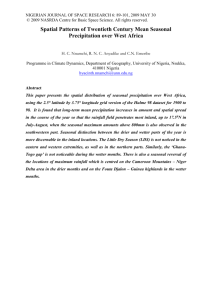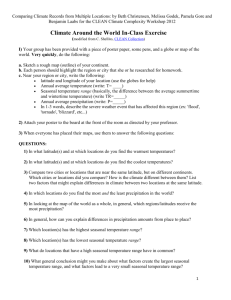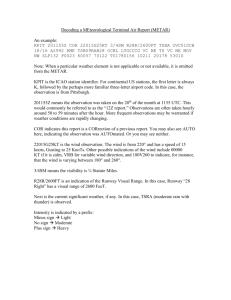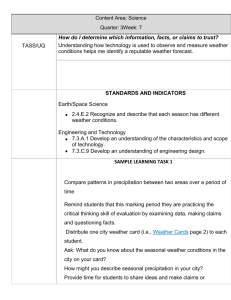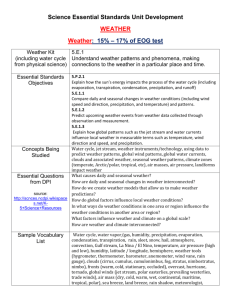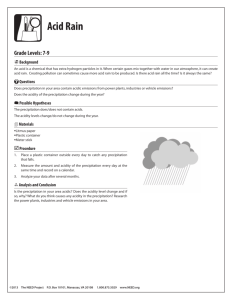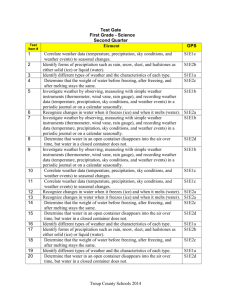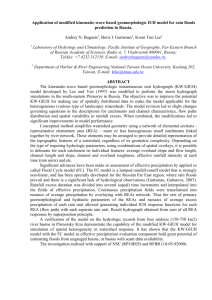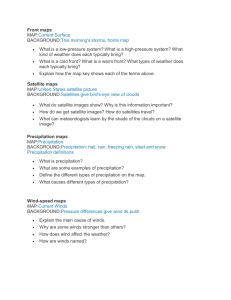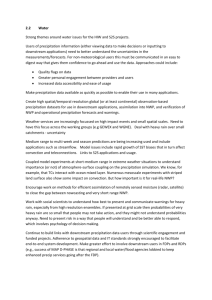File
advertisement
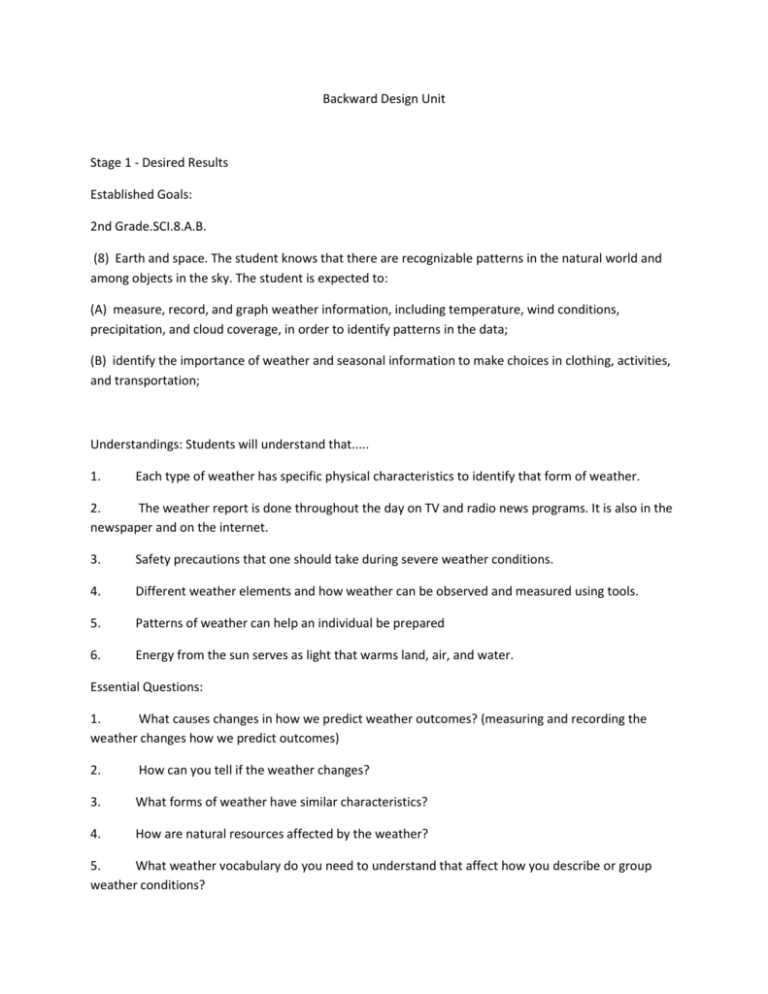
Backward Design Unit Stage 1 - Desired Results Established Goals: 2nd Grade.SCI.8.A.B. (8) Earth and space. The student knows that there are recognizable patterns in the natural world and among objects in the sky. The student is expected to: (A) measure, record, and graph weather information, including temperature, wind conditions, precipitation, and cloud coverage, in order to identify patterns in the data; (B) identify the importance of weather and seasonal information to make choices in clothing, activities, and transportation; Understandings: Students will understand that..... 1. Each type of weather has specific physical characteristics to identify that form of weather. 2. The weather report is done throughout the day on TV and radio news programs. It is also in the newspaper and on the internet. 3. Safety precautions that one should take during severe weather conditions. 4. Different weather elements and how weather can be observed and measured using tools. 5. Patterns of weather can help an individual be prepared 6. Energy from the sun serves as light that warms land, air, and water. Essential Questions: 1. What causes changes in how we predict weather outcomes? (measuring and recording the weather changes how we predict outcomes) 2. How can you tell if the weather changes? 3. What forms of weather have similar characteristics? 4. How are natural resources affected by the weather? 5. What weather vocabulary do you need to understand that affect how you describe or group weather conditions? 6. How do you know what to wear each day? 7. How can you make sure we are prepared for the weather? 8. What tools would you use to measure weather? 9. How do you measure weather conditions Knowledge: Students will know..... Vocabulary: Temperature, climate, weather, humidity, precipitation, drought, flood, weather conditions (cloudy, sunny), wind conditions, weather patterns, seasonal change, transportation. The Earth’s weather changes continuously from day to day. Types of weather include: sunny, cloudy, windy, rainy, or snowy. Changes in the weather are characterized by daily differences in wind, temperature, and precipitation. Precipitation occurs when water, previously evaporated, condenses out of the air and changes state from a gas to a liquid (rain) or to a solid (snow or sleet). Extremes in the weather, such as too little or too much precipitation, can result in droughts or floods. Storms have powerful winds, which may be accompanied by rain, snow, or other kinds of precipitation. Weather data is collected and recorded using instruments; such as a thermometer, rain gauge, and weather vane This information is very useful for predicting weather and determining weather patterns. Weather influences human activity. People who study and report on the weather are called meteorologists. Meteorologists have special tools to help them track weather patterns. Names of common weather instruments Skills: Students will be able to critically analyze (critical thinking) data from their investigations; and measure, evaluate, record, graph, communicate and collaborate weather information, including temperature, wind conditions, precipitation, and cloud coverage, in order to identify patterns in the data and identify the importance of weather and seasonal information to make choices in clothing, activities, and transportation. STWBA demonstrate their current level of knowledge of weather terms. “weather word map (Sticky notes with weather words and have the students group them based what terms fit best together). Stage 2 Assessment Evidence Performance Tasks: (Evidence that they understood the goal) 1. Dressing the Weather Bear and explaining the weather and why they are dressed that way. Teacher observes students and questions them as they complete the flip-book. Teacher records answers as anecdotal records in the guidebook. 2. Graph the type of weather and temperature observed over a period of time in students science journal. 3. Jeopardy Game over the weather conditions and clothing. 4. “Hidden Picture” science vocabulary matching game. Includes 3 levels of play, Level 3 includes one odd, “unmatchable” tile, so watch out for that one. 5. Seasonal Sort Game: Students will cut out the season names and glue them to a separate piece of paper. Next cut out the clues below and glue them into the correct seasonal column. There are 4 for each column. Students will read their clues and place them where they think they go and then glue them. 6. Weather Instruments & Cloud Match game 7. Wild Weather Adventure Game 8. Students will report weather daily during morning announcements. 9. Draw a sky wit clouds that show a thunderstorm is likely to happen. 10. Draw a sky with clouds that show a thunderstorm is not likely to happen. 11. Draw a sky that shows that it will not rain today. http://www.techchef4u.com/ipad/tis-the-season-for-ilearning/

